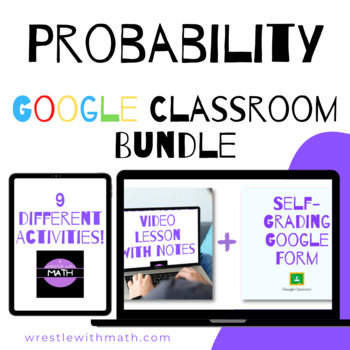Probability Google Form Bundle – Perfect for Google Classroom!
- Zip
- Google Apps™
- Internet Activities

What educators are saying
Products in this Bundle (9)
showing 1-5 of 9 products
Description
Probability Google Form Bundle – Perfect for Google Classroom!
This Google Form bundle includes 9 individual products about probability. I use these forms as part of my middle school unit of study on probability. This bundle is perfect for teachers using Google Classroom.
The following products are included in the bundle:
Experimental VS Theoretical Probability - Google Form & Video Lesson! - TRY IT FREE!
Introduction to Probability - Google Form & Video Lesson!
The Counting Principle - Google Form & Video Lesson!
Probability of Dependent Events - Google Form & Video Lesson!
Probability of Independent Events - Google Form & Video Lesson!
Factorials - Google Form & Video Lesson!
Combinations - Google Form & Video Lesson!
Permutations - Google Form & Video Lesson!
Sampling - Making Predictions Using Data - Google Form & Video Lesson!
Each product contains the following:
(1) Google form containing a variety of practice problems. Each form may be used as a practice resource, assessment or collaborative learning tool.
(1) Interactive video lesson on each topic
(1) Notes package that complement the video lesson
Enjoy!
"The mission of Wrestle with Math is to create engaging, highly effective resources for the math classroom"





